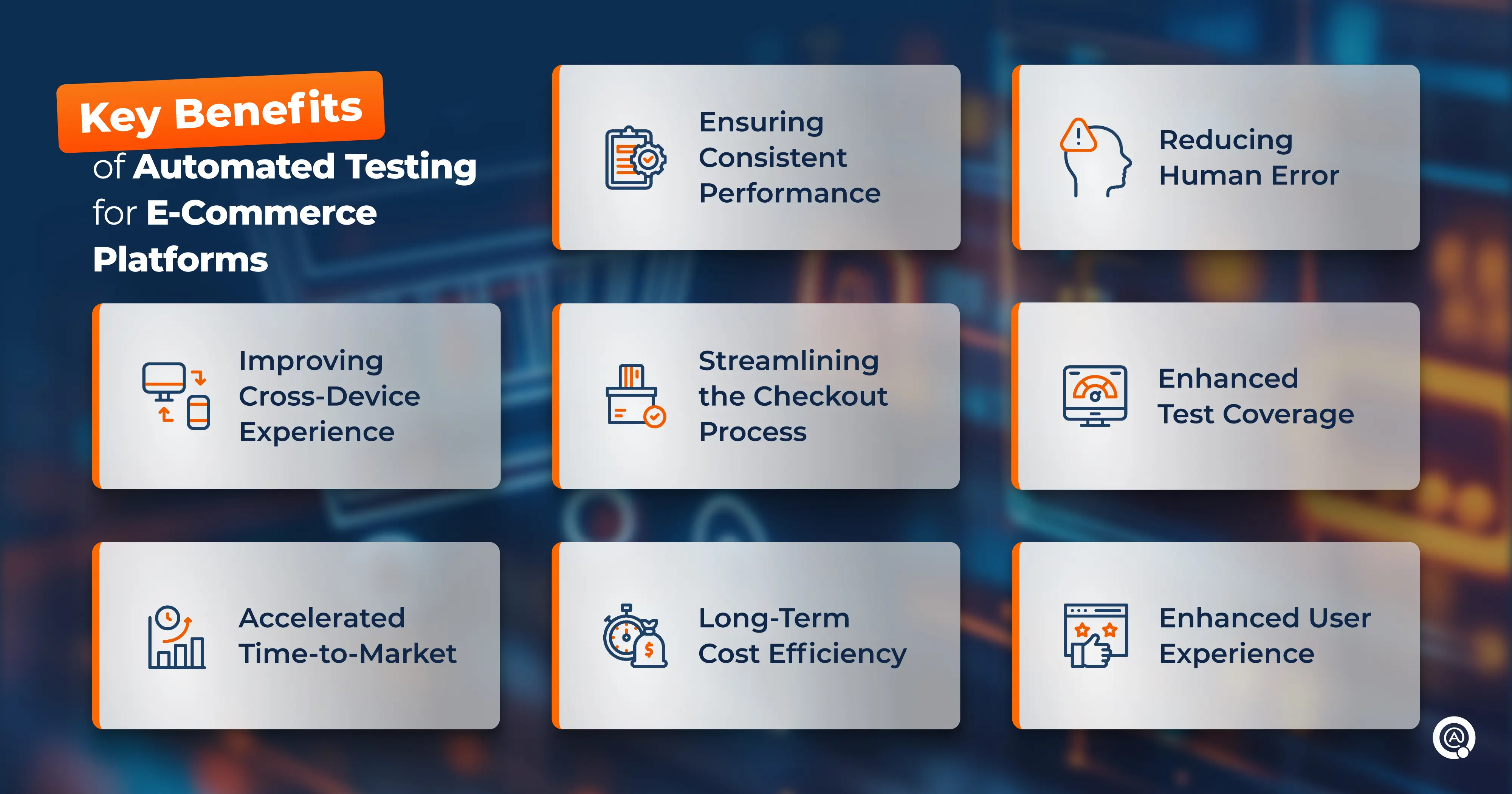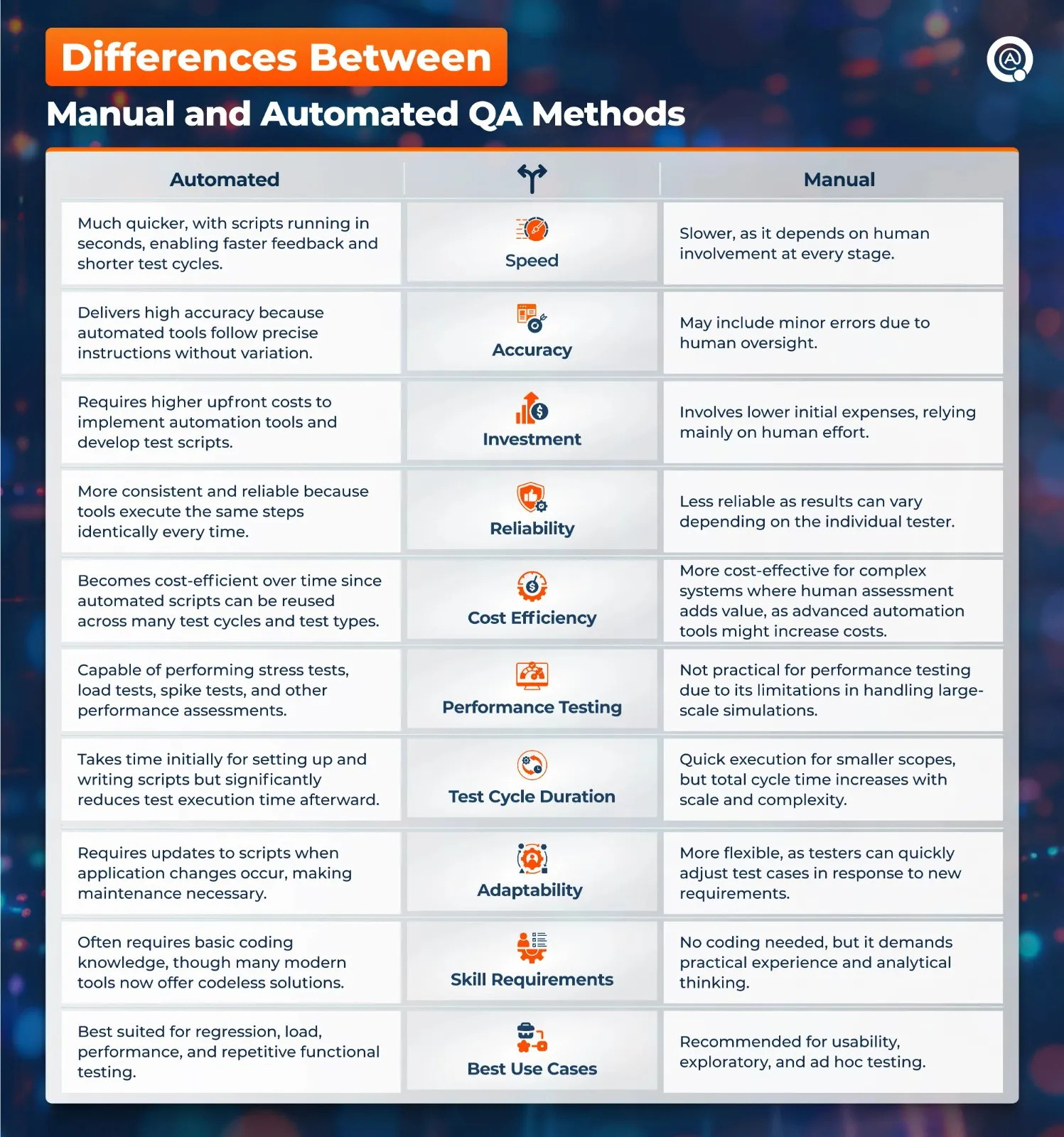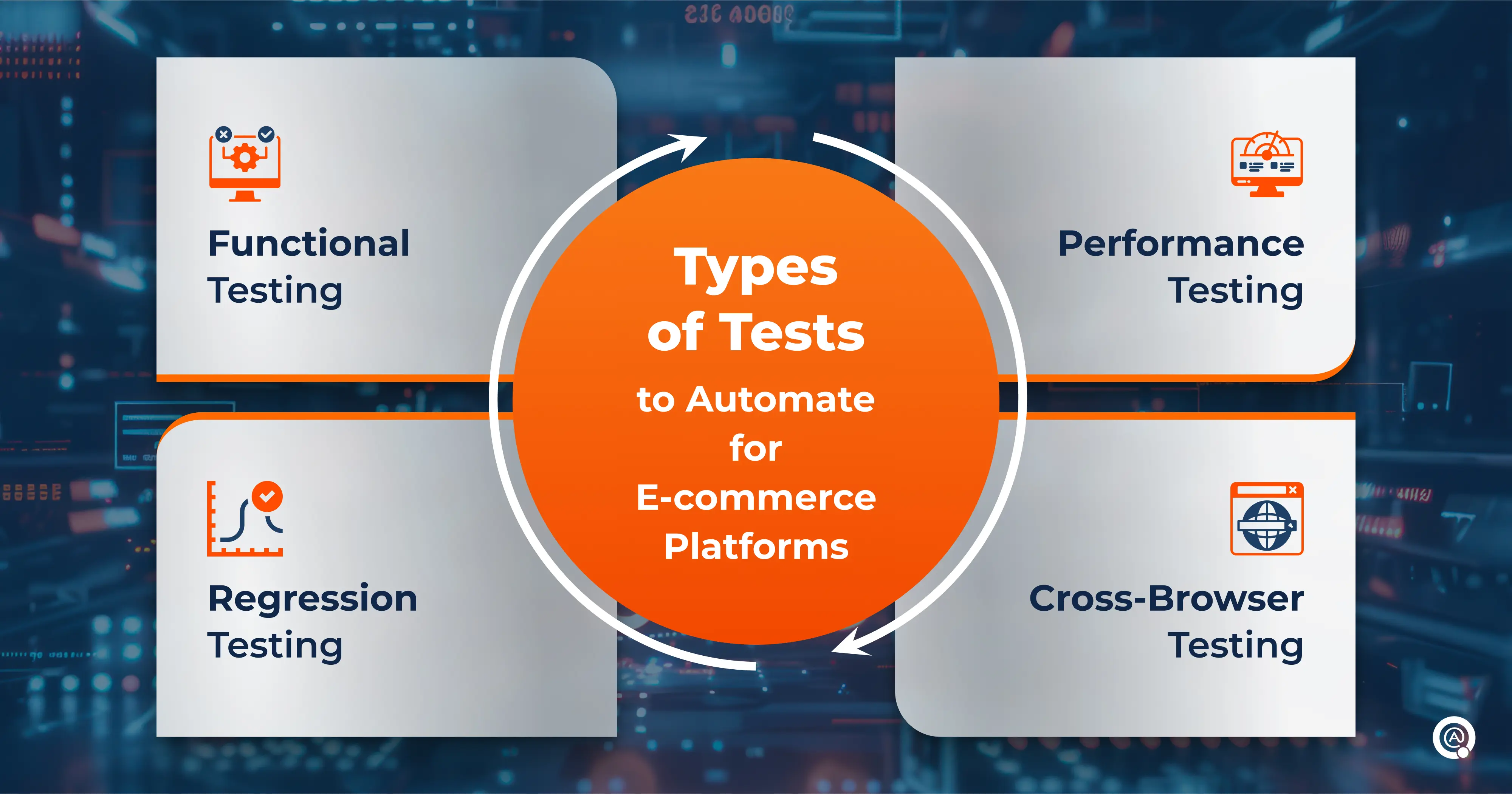- QATestLab Blog >
- QA Basics >
- Types of Software Testing >
- E-commerce Testing >
- The Power of Automated QA in E-Commerce: Speed, Stability, and Success
The Power of Automated QA in E-Commerce: Speed, Stability, and Success

Online shoppers expect websites to work perfectly every time they visit. However, as e-commerce platforms become more sophisticated and businesses rush to release new features, the risk of bugs and slowdowns increases.
Manual testing alone can be time-consuming and difficult to scale when addressing the complexity of modern e-commerce platforms. Automated testing is crucial for scaling operations, speeding up releases, and maintaining consistent quality across all devices and browsers. It helps detect issues early, ensures stable performance during peak traffic, and supports sustainable growth in a competitive market.
In this article, we’ll explore why QA automation matters for e-commerce, the benefits it brings, best practices for successful implementation, and the trends shaping its future.
The Essentials of Automated Testing for E-Commerce
What is Automated Testing?
Automated testing is a technique that involves executing test cases with the help of automation tools. Instead of QA engineers checking features by hand, automated scripts quickly verify that everything works as expected. In e-commerce, this means validation functions like product searches, checkout processes, and page performance across different browsers and devices.
Key Benefits of Automated Testing for E-Commerce Platforms

1. Ensuring Consistent Performance
E-commerce platforms often experience traffic spikes during events like holiday sales, product launches, or flash deals. Automated testing allows teams to simulate large numbers of users accessing the platform at once, helping them identify performance bottlenecks or risks of system crashes. This proactive approach ensures the product stays stable and responsive, even under intense traffic.
2. Enhanced Test Coverage
Automation offloads repetitive tasks, enabling testers to focus on complex user flows, edge cases, and potential risks that aren’t covered by scripts. This shift improves test coverage and ensures that more parts of the product are tested thoroughly, reducing the likelihood of defects slipping into production and increasing overall release confidence.
3. Improving Cross-Device Experience
With more customers shopping on smartphones and tablets, e-commerce platforms must deliver a consistent experience across devices and browsers. Automated tools test different screen sizes, operating systems, and browsers to ensure that features work seamlessly everywhere, supporting a smooth and user-friendly shopping journey.
4. Streamlining the Checkout Process
The checkout stage is one of the most critical parts of an e-commerce site, as errors or delays here often lead to cart abandonment. Automated testing continuously verifies the entire checkout flow, from page load times to payment gateways, ensuring stability and preventing issues that might disrupt purchases.
5. Speeding Up Regression and Performance Testing
Automated tests are essential for running fast and reliable regression checks across every release cycle. They significantly reduce the time needed to validate existing functionality, allowing teams to move faster without compromising quality. In addition, automation enables efficient load and performance testing, helping ensure that the system remains stable under high traffic and real-world usage conditions.
6. Accelerated Time-to-Market (Including CI/CD)
Automating repetitive tasks significantly reduces test execution times. Combined with integration into CI/CD pipelines, automated testing provides immediate feedback on code changes, helping teams identify and fix issues quickly. This speeds up release cycles and allows businesses to deploy updates and new features faster.
7. Long-Term Cost Efficiency
While automation requires upfront investment for tools and setup, it becomes cost-effective over time. Automated tests can be run repeatedly with minimal additional cost, reducing reliance on manual testers and avoiding expensive fixes post-release. This efficiency translates into long-term savings and a higher return on investment.
8. Enhanced User Experience
By detecting defects early and ensuring smooth navigation and fast load times, automated testing helps deliver an exceptional shopping experience. A well-tested platform keeps customers engaged, reduces frustration, and encourages repeat visits.
Continuous testing works hand-in-hand with agile development, allowing teams to realize updates rapidly while keeping quality and user experience intact.
Can Automated Testing Fully Replace Manual Efforts?
Manual and automated testing each offer unique benefits and challenges. Selecting the right method depends on knowing their capabilities, your project’s scope, resources, and goals. Choosing wisely ensures the most effective results and ongoing improvements for your e-commerce website.

Types of Tests to Automate for E-commerce Platforms
Not every test in e-commerce needs to be automated, but some areas benefit significantly from it. Focusing your automation efforts on the right tests can save time, reduce errors, and ensure your platform performs flawlessly for customers. Here’s a look at the key types of tests worth automating to keep your e-commerce operations efficient and reliable.
Functional Testing
Functional testing verifies every crucial detail of an e-commerce platform, from the homepage and navigation panels to efficient product searches and detailed product information. It also checks core features like shopping carts, product filters, and personalized recommendations. Ensuring all these elements work smoothly provides customers with a seamless shopping experience.
Performance Testing
Performance testing measures how well the platform runs under normal conditions, while load testing simulates high-traffic events like Black Friday or Cyber Monday. This includes checking server response times and maintaining engagement during peak periods. Automated tools help detect bottlenecks and ensure the platform stays stable, even under pressure.
Regression Testing
Regression testing ensures that new updates or changes don’t break existing features. Automating these tests allows teams to quickly verify that essential functionalities, like product catalogs and checkout processes, remain stable even as new code is introduced.
Cross-Browser Testing
To support a global audience, automated tests confirm that the platform functions correctly across various devices, browsers, and geographical locations. This ensures customers worldwide enjoy a consistent, responsive shopping experience, no matter how they access the platform.

Future Trends in Automated Testing for E-Commerce
AI and Machine Learning Enhance Test Automation
Artificial intelligence and machine learning are increasingly used in test automation to improve efficiency and accuracy. AI-driven testing methods make it possible to predict potential issues, identify defects earlier, and adapt testing strategies based on data. These technologies enhance the effectiveness of automated testing and contribute to higher software quality.
Growth of Low-Code and No-Code Testing Tools
Low-code and no-code testing platforms are becoming more common, allowing people without deep programming skills to create and run automated tests. This development makes it easier for teams to involve more members in testing activities, improving flexibility and helping businesses keep pace with market demands.
Real-Time Analytics Drive Smarter Testing
Real-time analytics in automated testing provides immediate data that teams can use to adjust testing processes quickly. This enables faster detection of problems and more informed decision-making. Working with experienced automated testing service providers helps businesses apply real-time insights effectively and maintain high-quality standards.
Human and AI Collaboration in Testing
AI tools support human testers rather than replace them. Combining human expertise with AI’s ability to process large amounts of data improves testing speed, accuracy, and coverage. This collaboration strengthens the benefits of automated testing, ensuring more reliable software and faster delivery cycles.
Final Words About Automated Testing for E-Commerce Platforms
If you want to grow your e-commerce business, keep customers happy, and stay ahead of competitors, you need to ensure flawless quality at every step. Automated testing helps you keep your platform fast, reliable, and ready for anything.
At QATestLab, we have extensive experience in implementing automated testing solutions for e-commerce products of all scales and complexities. Our team understands the unique challenges of online retail and knows how to build testing strategies that improve quality, speed, and efficiency.
Ready to see how automated QA can transform your e-commerce platform? Contact us today and let’s discuss how we can support your business goals.

Learn more from QATestLab
Related Posts:
- How Automated Testing Can Help Ecommerce Platforms, in Real-Life Examples
- How not to Go Wrong With Automated Testing?
- Web Summit 2025: AI Leads the Future, But User Experience Sets the Direction
About Article Author
view more articles






